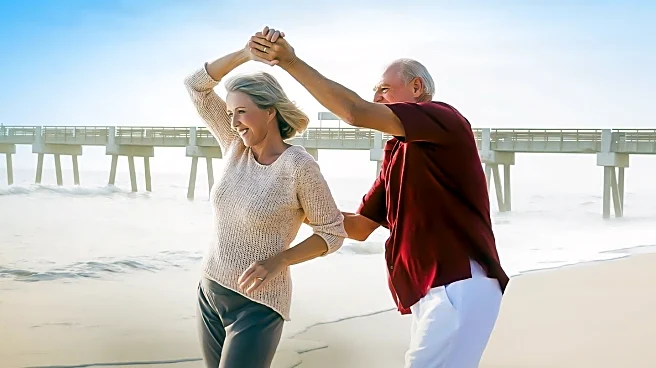Rapid Read • 8 min read
Roger Montenegro, a personal trainer and owner of Made Possible Personal Training, emphasizes the importance of strength training for individuals over 60 with limited mobility. According to Montenegro, age-related muscle loss, known as sarcopenia, begins around age 35 and accelerates significantly by age 60. This decline can make everyday activities, such as standing up from a chair or carrying groceries, increasingly difficult. Montenegro has developed a workout routine that targets major muscle groups in a safe and controlled manner, aiming to slow muscle loss, reduce fall risk, and improve confidence in movement. The exercises require minimal equipment, utilizing a sturdy chair and a resistance band, and focus on strengthening the upper back, improving posture, and supporting shoulder health.
AD
The significance of this development lies in its potential to improve the quality of life for seniors, a growing demographic in the U.S. As the population ages, maintaining mobility and independence becomes crucial for reducing healthcare costs and enhancing well-being. Strength training can help mitigate the effects of sarcopenia, thereby decreasing the risk of falls and related injuries, which are common among older adults. By promoting exercises that are accessible and require minimal equipment, Montenegro's approach could encourage more seniors to engage in physical activity, ultimately benefiting public health and reducing the burden on healthcare systems.
As awareness of the benefits of strength training for seniors grows, fitness centers and wellness programs may increasingly incorporate tailored exercise routines for older adults. Healthcare providers might also recommend such exercises as part of preventive care strategies. Additionally, there could be a rise in community-based initiatives aimed at promoting physical activity among seniors, potentially supported by local governments or non-profit organizations. These efforts could lead to broader societal changes in how aging and mobility are addressed, fostering a culture of active aging.
The focus on strength training for seniors also highlights broader issues related to aging and healthcare. It underscores the need for accessible fitness solutions that cater to the unique needs of older adults, who may face barriers such as limited mobility or chronic health conditions. Furthermore, it raises questions about how society can better support aging populations through infrastructure, policy, and community engagement. As the U.S. continues to grapple with an aging population, initiatives like Montenegro's could play a crucial role in shaping future health and wellness strategies.
AD
More Stories You Might Enjoy










